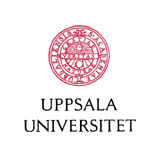|
Adaptive Modulation Systems for Predicted Wireless Channels.
Sorour Falahati,
Uppsala University,
Arne Svensson,
Chalmers U. of Technology,
Mikael Sternad,
Uppsala University and
Torbjörn Ekman
UNIK, Norway.
IEEE Transactions on Communications,
Vol. 52, 2004, pp. 307-316, February 2004.
© IEEE
-
Abstract:
-
When adaptive modulation is used to counter
short-term fading in mobile radio channels,
signaling delays create problems with
outdated channel state information.
The use of channel power prediction will improve the performance
of the link adaptation.
It is then of interest to take the quality of these predictions
into account explicitly when designing the adaptive
modulation scheme. We study the optimum design
of an adaptive modulation scheme based on
uncoded M-QAM modulation assisted by
channel prediction for the flat Rayleigh fading channel.
The data rate, and in some variants the transmit power,
are adapted to maximize the spectral efficiency subject to
average power and bit error rate constraints.
The key issues studied here are how a known prediction error
variance will affect the optimized transmission properties
such as the SNR boundaries that determine when to apply
different modulation rates, and to what
extent it affects the spectral efficiency.
This investigation is performed by analytical optimization
of the link adaptation, using the statistical properties of a
particular but efficient channel power predictor.
Optimum solutions for the rate and transmit power
are derived based on the predicted SNR and the
predicted error variance.
-
Related publications:
-
-
Conference paper version,
(IEEE GlobeCom 2003).
-
First conference paper,
(RVK02) on one of the cases.
-
Paper at VTC2003,
comparing also to trellis-coded modulation (TCM).
-
Channel Power Prediction,
by using unbiased predictors and
advanced regressor noise reduction (VTC 2002-Fall).
-
PhD Thesis on channel prediction,
by Torbjörn Ekman, where derivations of the
statistics of the prediction errors can be found.
-
Source:
-
Pdf
|
The Wireless IP Project Homepage
|
Main
entry in list of publications
|
This material is posted here with permission of the IEEE.
Such permission of the IEEE does not in any
way imply IEEE endorsement of any of Uppsala University's
products or services.
Internal or personal use of this material is permitted.
However, permission to reprint/republish this material for
advertising or promotional purposes or for creating new collective
works for resale or redistribution must be obtained
from the IEEE by writing to [email protected].
By choosing to view this document, you agree to all
provisions of the copyright laws protecting it.
|

